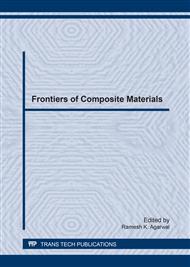p.1
p.10
p.14
p.17
p.21
p.25
p.29
p.34
A Simple Microwave Route for the Synthesis of Tricalcium Phosphate (β-TCP) Powders for Bone Healing Applications
Abstract:
The recent trend in bioceramics research is mainly concentrated on bioactive ceramics, i.e. hydroxyapatite, tricalcium phosphates and bioactive glasses, as they exhibit superior biological properties over other materials. Among these tricalcium phosphates have been found very important member due to their biocompatible and biodegradable properties that can help to promote new bone formation when implanted in a bone defect site. Therefore the aimed of the present work was to investigate the synthesis of tricalcium phosphate via simple microwave route at Ca/P molar ratios below, 1.67 and at pH of reaction environment equal 5. The detail characterizations of the prepared samples were carried out using Energy-dispersive X-ray spectroscopy (EDX), FT-IR spectroscopy (FTIR) and X-Ray Diffraction (XRD) analysis. From the analysis of EDX, FTIR and XRD patterns, the formation of β-TCP was confirmed.
Info:
Periodical:
Pages:
14-16
Citation:
Online since:
March 2017
Authors:
Keywords:
Price:
Сopyright:
© 2017 Trans Tech Publications Ltd. All Rights Reserved
Share:
Citation:


